As a member of the Anchor Run Farm CSA (community supported agriculture), we receive weekly updates from our farmers, Dana Hunting and Derek McGeehan. I always enjoy their emails. They are a cross between farm report and nature essay. I like them too because they inform and educate, sharing how my vegetables grow and the in’s and out’s of sustainable, organic agriculture. With their permission, I reprint some of their weekly reports. If you are interested in becoming a member of the Anchor Run CSA, see their website for more information.
by guest blogger Dana Hunting
August 14, 2011: This August we’ve received more rain than we received in June and July combined, and after this current storm completely passes through, we might even be able to throw May in there, too. Not that it is completely unwelcome, but anytime we receive more than an inch or two of rain from a storm, water tends to pool in the aisles as well as form little rivers in the fields. Unfortunately the water also takes soil along with it and can leach nutrients and minerals. In our three years here, it seems that we get two to three storm events during the season that dump three to five inches of rain, and this is the second one of this year. Let’s hope the carrots make it through!
 In anticipation of all this rain, we spent the past couple of days racing around getting ready for and sowing cover crops. We love cover crops and rely on them to improve and protect our soils when we’re not growing produce. At this point and for a little while now, we’ve been able to sow cover crops knowing that those areas of the fields are done producing crops for the season. Mentally, that is satisfying because we don’t need to think about those areas anymore. Up until now we’ve been able to sow summer cover crops like buckwheat and sorghum-sudan grass which are frost killed. For the past couple of weeks we’ve sowed tillage radish which will grow until a heavy frost or freeze. Now, we’re starting to transition to traditional fall cover crops like oats and crimson clover which thrive in cooler weather. About a month or month and a half from now we’ll begin sowing traditional late fall cover crops like rye, vetch, and winter peas.
In anticipation of all this rain, we spent the past couple of days racing around getting ready for and sowing cover crops. We love cover crops and rely on them to improve and protect our soils when we’re not growing produce. At this point and for a little while now, we’ve been able to sow cover crops knowing that those areas of the fields are done producing crops for the season. Mentally, that is satisfying because we don’t need to think about those areas anymore. Up until now we’ve been able to sow summer cover crops like buckwheat and sorghum-sudan grass which are frost killed. For the past couple of weeks we’ve sowed tillage radish which will grow until a heavy frost or freeze. Now, we’re starting to transition to traditional fall cover crops like oats and crimson clover which thrive in cooler weather. About a month or month and a half from now we’ll begin sowing traditional late fall cover crops like rye, vetch, and winter peas.
August 21, 2011: Over the past week the farm was the recipient of nearly an inch of rain per day! August isn’t usually our wettest month, but it might be this year. I find consolation knowing that the ground water is being replenished and that maybe tree rings for this particular year will be a tad thicker than others, perhaps. We like big trees. On the other hand, our non-perennial field crops are suffering slightly with the constant presence of water. Their little wilting leaves seem to express that they “just… can’t… drink… anymore…”
 Additionally, the saturated atmosphere speeds up the transmission of fungal diseases on our cucurbits, like summer squash and cucumbers, as well as on our solanaceous crops, like tomatoes. As a result, powdery mildew on our cucurbits is fast shortening the life span of those plants. Fortunately we practice successional plantings which we keep under a protective covering so to extend the harvest season for summer squash and cucumbers. However, as soon as we remove the covering to begin harvesting from the new plants, they are exposed to powdery mildew spores. Especially in wet weather like this powdery mildew can spread very quickly. With that said, we probably have a few more weeks of summer squash, but sadly cucumber season might be over.
Additionally, the saturated atmosphere speeds up the transmission of fungal diseases on our cucurbits, like summer squash and cucumbers, as well as on our solanaceous crops, like tomatoes. As a result, powdery mildew on our cucurbits is fast shortening the life span of those plants. Fortunately we practice successional plantings which we keep under a protective covering so to extend the harvest season for summer squash and cucumbers. However, as soon as we remove the covering to begin harvesting from the new plants, they are exposed to powdery mildew spores. Especially in wet weather like this powdery mildew can spread very quickly. With that said, we probably have a few more weeks of summer squash, but sadly cucumber season might be over.
Despite various annoyances with our saturated state, the cooler temperatures and respite from the sun has been an admittedly welcomed pleasure. Unable to work the fields has allowed a bit of a breather from our usual frenetic pace and it has been a treat to enjoy the treasure trove of sights and sounds indicative of this time of year. The constant buzz of crickets broken by occasional chirping frogs or toads, bird calls and loping butterflies is lovely brain fodder for a happily spent farmer.
p.s. In case it’s unclear, we really would like it to stop raining!

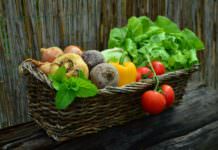


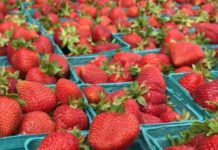



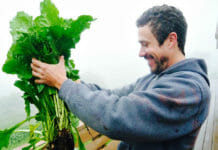
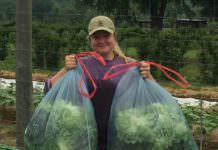
![What we’re reading [Oct 16 2017]](https://www.buckscountytaste.com/wp-content/uploads/2017/10/coffee_macbook_reading_pexels-photo-414630-218x150.jpeg)
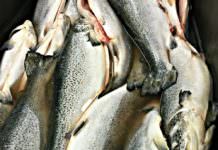
Great reminder of the hard and thoughtful work that is provided by our diligent local farm community.
Thanks for sharing.